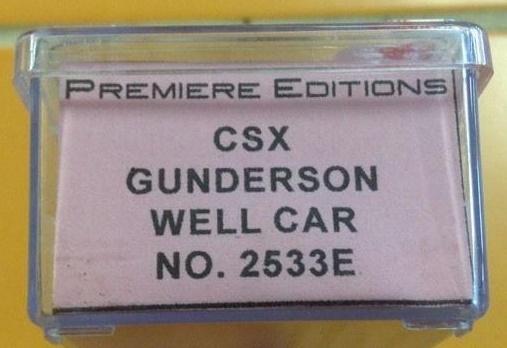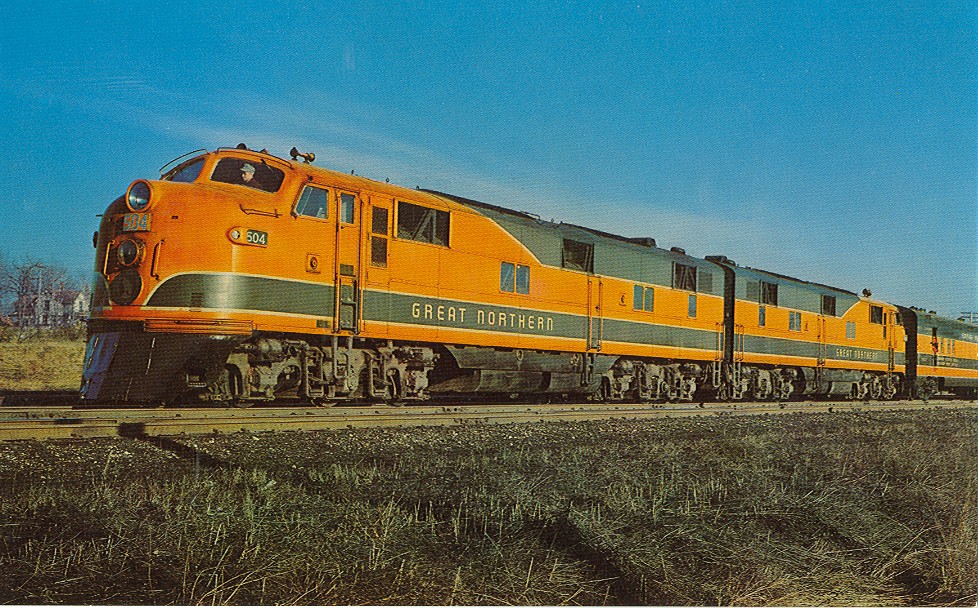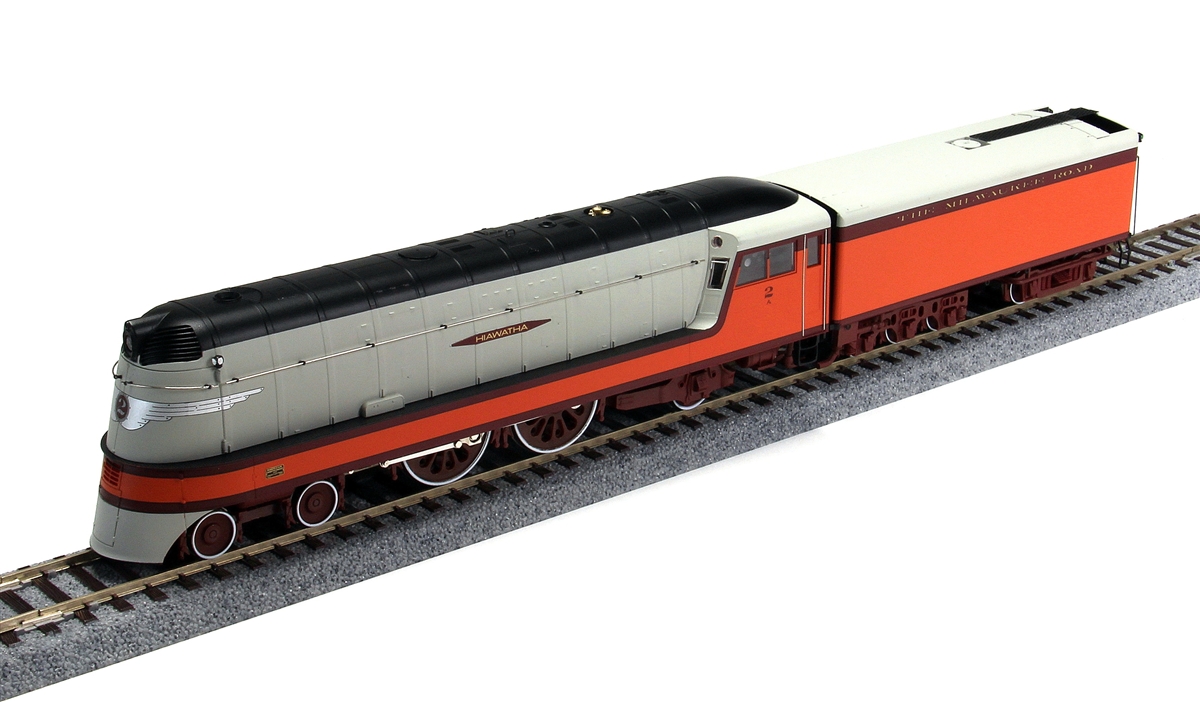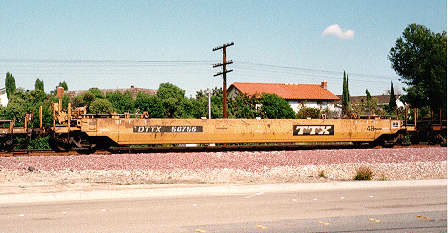Specific Item Information: Twelve (12) different road numbers in this series 2533A-M
Prototype History: Double-stack container trains first hit the rails for regular service in 1981. The Southern Pacific Railroad had developed the idea to provide service for the Sea- Land maritime shipping company. SP's pioneering double-stack service let Sea- Land's containers take a shortcut from the west coast to the Gulf of Mexico bypassing the Panama Canal. From prototype car to production order, the SP spent a little over four years on the double-stack development project. The SP's double-stack cars featured unwieldy bulkheads on each end to prevent the loose top container from blowing off of the car. A new group at Greenbrier Intermodal designed a similar bulkhead car, even as other companies were starting to leave the bulkheads off of their stack cars. The support for the upper container came from inter-box connectors (IBCs) which had been used for years in oceangoing container shipping. Greenbrier and their car builder, Gunderson, wanted to get in on that market, and did so with their Maxi-Stack cars. But there was another new market out there: developing a single, two-truck stack car. Almost all of the existing cars in service were articulated, with the exception of one SP prototype car.
David DeBoer, a co-founder of Greenbrier, had been seeking to fill this single-well stack car niche, despite the "intermodal experts" at Trailer Train Corp. insisting that the only single-well car that could ride smoothly was a European-style 2-axle car. (In fact, it was DeBoer who wrote the reference book I used for much of this background. His Piggyback and Containers is a highly recommended read, and it was my first review item for MRN.) DeBoer sought advice from his retired former boss at the SP. This pitted the Doubting Thomases at TTX up against Bill Thomford, who had developed the SP's double-stack prototypes. Thomford laughed off Trailer Train's existence, pointing out that his own single-well, two-truck stack car had a million miles of reliable service under its belt. DeBoer went back to Greenbrier and the company got to work designing the car that TTX said was doomed to failure.
In 1990, Gunderson turned out the Husky Stack. Test engineers proved Thomford right, and the cars tracked perfectly. Trailer Train ended up reversing their initial claims and ordering 150 Husky Stack cars built with 48-foot wells in 1991. The Burlington Northern also ordered 75 cars and other buyers lined up later. The original 1991 model cars are still going strong for many different owners, including Trailer Train.
Husky Stack development has continued today, with the introduction of 53-foot wells and the "All-Purpose" Husky Stack, with trailer hitches on each end. In Greenbrier terms, the car is named the HS53 for the 53-foot well version.
David DeBoer, a co-founder of Greenbrier, had been seeking to fill this single-well stack car niche, despite the "intermodal experts" at Trailer Train Corp. insisting that the only single-well car that could ride smoothly was a European-style 2-axle car. (In fact, it was DeBoer who wrote the reference book I used for much of this background. His Piggyback and Containers is a highly recommended read, and it was my first review item for MRN.) DeBoer sought advice from his retired former boss at the SP. This pitted the Doubting Thomases at TTX up against Bill Thomford, who had developed the SP's double-stack prototypes. Thomford laughed off Trailer Train's existence, pointing out that his own single-well, two-truck stack car had a million miles of reliable service under its belt. DeBoer went back to Greenbrier and the company got to work designing the car that TTX said was doomed to failure.
In 1990, Gunderson turned out the Husky Stack. Test engineers proved Thomford right, and the cars tracked perfectly. Trailer Train ended up reversing their initial claims and ordering 150 Husky Stack cars built with 48-foot wells in 1991. The Burlington Northern also ordered 75 cars and other buyers lined up later. The original 1991 model cars are still going strong for many different owners, including Trailer Train.
Husky Stack development has continued today, with the introduction of 53-foot wells and the "All-Purpose" Husky Stack, with trailer hitches on each end. In Greenbrier terms, the car is named the HS53 for the 53-foot well version.
Road Name History: CSX Transportation (reporting mark CSXT) is a Class I railroad in the United States. The main subsidiary of the CSX Corporation, the railroad is headquartered in Jacksonville, Florida, and owns about 21,000 route miles (34,000 km). CSX operates one of the three Class I railroads serving most of the East Coast, the other two being the Norfolk Southern Railway (NS) and Canadian Pacific Railway. It also serves the Canadian provinces of Ontario and Quebec. Together CSX and Norfolk Southern Railway have a duopoly over all east-west freight rail traffic east of the Mississippi River. As of October 1, 2014 CSX's total public stock value was slightly over $32 billion.
CSX Transportation was formed on November 1, 1980, by combining the railroads of the former Chessie System with Seaboard Coast Line Industries, and finally with the Seaboard System Railroad in 1986. The originator of the Seaboard System was the former Seaboard Air Line Railroad, which previously merged with the Atlantic Coast Line Railroad in 1967, and later with the Louisville & Nashville Railroad, as well as several smaller subsidiaries such as the Clinchfield Railroad, Atlanta & West Point Railroad, Monon Railroad and the Georgia Railroad. The origin of the Chessie System was the former Chesapeake & Ohio Railway, which had merged with the Baltimore & Ohio Railroad, and the Western Maryland Railway.
Read more on Wikipedia.
CSX Transportation was formed on November 1, 1980, by combining the railroads of the former Chessie System with Seaboard Coast Line Industries, and finally with the Seaboard System Railroad in 1986. The originator of the Seaboard System was the former Seaboard Air Line Railroad, which previously merged with the Atlantic Coast Line Railroad in 1967, and later with the Louisville & Nashville Railroad, as well as several smaller subsidiaries such as the Clinchfield Railroad, Atlanta & West Point Railroad, Monon Railroad and the Georgia Railroad. The origin of the Chessie System was the former Chesapeake & Ohio Railway, which had merged with the Baltimore & Ohio Railroad, and the Western Maryland Railway.
Read more on Wikipedia.
Brand/Importer Information: The Freight Yard was a hobby shop that did custom decoration and special runs of other manufacturers' N Scale products. It sold its custom products under several brands or collections: Premiere Editions, by The Freight Yard and Dreams Design.
It was located in Anaheim, California and then moved to 2006 in Phoenix, Arizona.
Established in the late 1980s, it stopped business under this name by the end of the 2000s.
The Freight Yard was owned and operated by Darren J. Cohen. Darren is now operating North Valley Trains.
The Freight Yard / Premiere Editions runs are usually available in series of two to twelve different numbers (suffixed A to M, with I not used).
The first two digits of the stock number correspond to the release year (9x being 199x, and 2x being 200x).
It was located in Anaheim, California and then moved to 2006 in Phoenix, Arizona.
Established in the late 1980s, it stopped business under this name by the end of the 2000s.
The Freight Yard was owned and operated by Darren J. Cohen. Darren is now operating North Valley Trains.
The Freight Yard / Premiere Editions runs are usually available in series of two to twelve different numbers (suffixed A to M, with I not used).
The first two digits of the stock number correspond to the release year (9x being 199x, and 2x being 200x).
Item created by: Alain LM on 2022-12-11 04:50:54. Last edited by Alain LM on 2022-12-11 04:53:21
If you see errors or missing data in this entry, please feel free to log in and edit it. Anyone with a Gmail account can log in instantly.
If you see errors or missing data in this entry, please feel free to log in and edit it. Anyone with a Gmail account can log in instantly.












